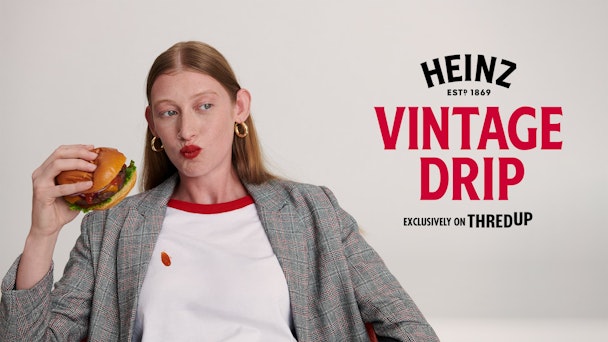Nostalgia is an important part of taste. Top food brands are capitalizing
As part of The Drum’s Food & Drink Focus, Elvis’s Camilla Yates takes us through recent research that explains how the rosy lens of nostalgia can offer brands a taste boost.

How do you eat yours? Our research suggests that the UK likes its food with a healthy serving of nostalgia. And in the timeless words of Viennetta, ‘One slice is never enough.’
We’ve seen nostalgia trending in culture for a while now - Google searches for ‘Y2K’ have increased tenfold in the past five years, and reboots, historical stories and Barbie dominate the cinema slate. This is partly a result of cyclical trends being amplified on TikTok, but it’s also a collective stress response in reaction to the times we’re living in. Nostalgia last had a renaissance in the wake of the 2008 recession: Looking back on the past with rosy sentimentality seems to be a way to make ourselves feel safe when faced with uncertainty or fear about the present or near future. And with food playing such a huge part of our everyday lives, it’s no surprise that the power of nostalgia is at play in this sphere.
Nostalgia is often a sensory concept - the smell of potato waffles under the grill, the taste of cheese and onion crisps, or the gloop of a drop of golden syrup. All these sensory details are likely to conjure brand associations in your mind. And when we explored what factors contribute most to the UK’s perception of a brand as nostalgic in our proprietary research of a nationally representative spectrum of the UK, a whopping 42% of the UK say that a specific taste, smell or sound drives their perception of a brand as nostalgic. Advertising also plays a significant role, with 24% saying it was the biggest contributor to their perception of nostalgic brands.
Advertisement
Moreover, the UK has a place in its heart for many nostalgic brands. When we asked which products people remember most fondly from when they were younger, Birds Eye Fish Fingers, Walls Viennetta and Cadbury Creme Egg took the top spots. Dairylea, Birds Eye Potato Waffles and Heinz Baked Beans also received significant appreciation. All of these products are brands with a rich heritage. They’re brands that lean into their retro credibility when relevant. Still, by regularly evolving their core creative ideas, they have, arguably, created a timelessness, which means they can also present themselves as tried and trusted contemporary staples or even platforms for more progressive ideas.
From fish finger sandwich competitions that change how people might experience Birds Eye to Cadbury Creme Egg platforming intersectional inclusivity in its ‘Golden Goobilee’ campaign, ensuring household names can simultaneously balance nostalgia with current cultural relevance is of key importance when ensuring the brand’s present and future effectiveness.
Treading the strategic balance between past, present, and future is something that Lyle’s Golden Syrup has managed to do with great success. Lyle’s is a traditional, well-established brand, holding the Guinness World Record for the oldest brand packaging, with the same packaging being maintained since 1885 with only slight technical changes during the war due to shortages of materials. Lyle’s also had a lot of latent nostalgic love, but it was a brand stuck in the back of the cupboard. (Editor’s note: Lyle’s was rebranded yesterday; what were the chances?)
Advertisement
So today, rather than being a stuffy traditional brand that people forget they own, Lyle’s sits proudly on the breakfast table, delivering a delicious sensorial burst that makes you feel absolutely golden. Last year’s refresh ensures the fundamental role of the product remains the same, regardless of era or dish, so Lyle’s can be positioned simultaneously as nostalgic and progressive.
This strategy significantly increased brand awareness, preference and sales for Lyle’s, but it requires careful consideration and application for it to be effective. Nostalgic appeal doesn’t always translate into present-day sales: Out of the brands that people remember most fondly from when they were younger, only those that are investing in staying current, like Creme Egg and Walkers, would be significantly missed if they were discontinued. For instance, while 32% of the UK remembers Viennetta fondly from when they were younger, only 11% would actually miss it if it didn’t exist today.
Suggested newsletters for you
In order to really leverage a brand’s nostalgic appeal, a deep understanding of its relevance and role today and tomorrow is the only way forward.

